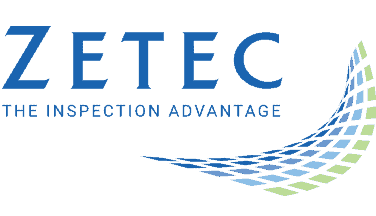How Full Matrix Capture Refines Total Focusing Method Phased Array Ultrasonic NDT

Phased array ultrasonic testing (PAUT) is an excellent method for inspecting a wide range of components. It’s more in-depth than traditional UT, allowing the user to gather information that a single-coil test cannot. Using an array of transducers offers more robust capture, but it has limitations in data use. Much of the raw data is lost using standard PAUT. However, by combining full matrix capture (FMC) with the total focusing method (TFM), all relevant data can be used to its fullest potential.
The law of large numbers tells us that the more data gathered, the higher the accuracy of the result. Big data can account for anomalies and outliers while providing clear evidence of standard expectations. This theorem applies to the total focusing method, as it allows for the use of PAUT to collect more angles and readings that enhance NDT accuracy.
What is Full Matrix Capture?
Phased array ultrasonic testing improves on traditional UT that only uses a single transmitter for sending and receiving sound waves. The limitations of single-probe UT could lead to dead zones or inaccurate readings. On top of that, it’s a longer process that requires multiple angles to gain a full picture of the inspected part.
| Learn how to maximize PAUT results with FMC and TFM in our webinar! |
PAUT eliminates dead zones and other issues inherent in its predecessor. Typically, it leverages 16 to 64 elements to capture and store multiple all time-domain signals or A-scans. Technicians can test various angles without moving the probe, which reduces the inspection time. It also provides a more comprehensive inspection that offers greater accuracy. However, there is a limitation inherent in the process, and that’s in the captured data.
Typically, only a summarized version of that data is captured and transmitted to the computer, while individual raw signals are omitted. In those raw signals could lie valuable data that increases the accuracy of readings. FMC is the solution.
Full matrix capture allows for the collection of data from every single receiver and transmitter pair. Raw A-scans are digitized and organized into a grid. Processing may occur within the instrument or on a separate computer system. As all the information is available, it can increase the accuracy of results, provided it’s processed correctly. Of course, with this much data, that could pose a problem. The TFM acts as the solution.
Combining Full Matrix Capture with the Total Focusing Method
FMC is just the process of collecting data for the inspection of parts. Without a straightforward way to make sense of this data, the FMC has no purpose. The TFM processes all that data and allows a more detailed inspection.
In the TFM, the data breaks down to pixels. Each pixel gets a dedicated focal law specific to its location. As a result, every single pixel within the frame is correctly focused. Combining the full matrix capture and the total focusing method provides a lot of benefits to include;
- Highly detailed readings capable of locating smaller flaws
- The option to perform multiple probe configurations
- Increased inspection area
- Rapid completion
- Reduced risk of signal interference and dead zones
- Minimized problems in inspecting large grain materials
TFM capabilities make it possible to complete inspections faster, more accurately, and in greater detail. It maximizes the results of PAUT by leveraging all the data from an FMC process. This combination ensures technicians locate flaws when they’re small and easier to address, rather than when they grow serious.
Making the Right Choice in FMC and TFM Technology
The type of inspections that full matrix capture and the total focusing method are best suited for occur in the field, rather than in a temperate environment. Typically, inspectors seek out flaws like hydrogen cracking or attacks or issues with welds. Environments where these issues occur include oil and gas refineries, chemical manufacturers, nuclear facilities, and other high-risk areas. Inspections require rapid completion to limit downtime and the chance of asset failure.
Portable PAUT equipment will be essential to inspect parts in these locations. In many solutions, it’s ideal if the equipment is capable of providing analysis and reporting at the site, rather than requiring downloading to a computer to evaluate readings. Ideally, it includes onboard touch screens and software with the right tools so technicians can better understand their readings’ results. This type of advanced equipment allows inspections to be set up, deployed, and interpreted quickly, eliminating the need to import focal law files created with an external calculator or to remote-control the system using advanced PC-based software.
Durability is also an essential factor—though the definition of durability can vary from brand to brand. Typically, equipment with no air-intakes lasts longer and stands up to harsh conditions better. A strong casing will also protect the delicate instruments and prevent damage that can impact readings.
Equipment that can apply full matrix capture with the total focusing method is the best possible way to inspect vital parts in the field. These capabilities boost the power of PAUT by making use of all the data available. Leveraging sophisticated, portable instruments that apply FMC and TFM allows technicians to locate problems faster and minimize equipment downtime.
Zetec offers the TOPAZ64, which combines full matrix capture and the total focusing method into one portable, durable instrument. Visit our contact page to learn more.
